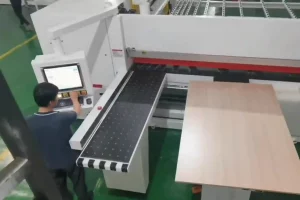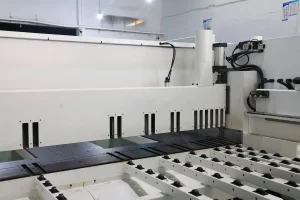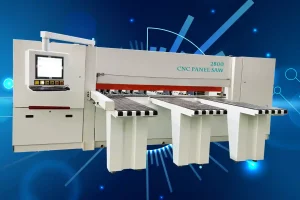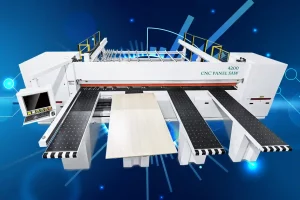
Precision Sawing & Cutting Techniques for Improved Accuracy and Efficiency
Precision sawing and cutting techniques are indispensable skills across various industries, from woodworking to metalworking, where accuracy directly impacts the quality of the final product. This guide explores essential strategies and considerations for achieving precise cuts, optimizing efficiency, and minimizing material waste.
Introduction to Precision Sawing & Cutting
Achieving precise cuts is not just about skill; it involves understanding the interplay of materials, tools, and techniques. Whether you’re working with wood, metal, or delicate materials like electronics, employing the right sawing techniques is crucial for ensuring accuracy and efficiency. This section delves into the foundational aspects of precision sawing that contribute to superior results in diverse applications.
Key Considerations: Choosing the appropriate saw blade based on the material’s properties is fundamental. For instance, hardwood requires a blade with specific tooth configurations for clean cuts, whereas metal may demand blades with different compositions for optimal performance. Additionally, mastering the feed rate—how fast the saw moves through the material—is essential for maintaining control and achieving precise dimensions.
Conclusion: Precision sawing sets the stage for achieving high standards of accuracy and efficiency in various industrial and artisanal applications. By understanding and applying these foundational principles, craftsmen and professionals can elevate their cutting capabilities and enhance overall productivity.
Selecting the Right Blade for Precision Sawing
The choice of saw blade plays a pivotal role in determining the quality and precision of cuts across different materials. Understanding which blade is best suited for specific tasks ensures optimal performance and minimizes errors. This section explores the nuances of blade selection and its impact on achieving precise results.
Blade Selection Criteria: When working with wood, selecting a blade with appropriate tooth geometry and material composition is critical. Carbide-tipped blades are preferred for hardwoods due to their durability and ability to maintain sharpness over extended use. Conversely, bi-metal blades are ideal for cutting through metals, offering enhanced toughness and longevity.
Conclusion: Choosing the right saw blade is a foundational step towards achieving precision in sawing and cutting operations. By matching the blade to the material type and application requirements, craftsmen can enhance cutting accuracy and achieve superior results.
Optimizing Feed Rate and Blade Tension for Precision
Achieving precise cuts involves more than just selecting the right blade—it also requires mastering the feed rate and ensuring proper blade tension. These factors directly influence the smoothness and accuracy of cuts, making them crucial elements of precision sawing techniques.
Feed Rate Considerations: Controlling the speed at which the saw moves through the material is essential for achieving accurate dimensions. A slower feed rate allows for greater control and precision, particularly when cutting intricate shapes or detailed patterns. Conversely, a faster feed rate may expedite the cutting process but can compromise accuracy, leading to wider cuts or rough edges.
Blade Tension Management: Proper blade tension ensures that the saw blade remains aligned and stable during operation, minimizing vibrations and ensuring clean cuts. Over-tensioning can lead to premature blade wear or breakage, while insufficient tension can result in blade deflection and reduced cutting accuracy.
Conclusion: Optimizing feed rate and blade tension is integral to achieving precise cuts and maximizing the efficiency of sawing operations. By maintaining control over these variables, craftsmen can uphold high standards of quality and consistency in their work.
Advanced Sawing Technologies: Laser Cutting and Waterjet Cutting
Innovative technologies such as laser cutting and waterjet cutting have revolutionized precision cutting in industries where exacting standards are paramount. These advanced techniques offer unparalleled accuracy and versatility, particularly for materials that require intricate detailing and minimal mechanical stress.
Laser Cutting Precision: Laser cutting utilizes focused laser beams to melt, burn, or vaporize materials along precise paths. This method is highly effective for cutting intricate shapes and patterns in materials like metals, plastics, and composites with minimal heat-affected zones.
Waterjet Cutting Precision: Waterjet cutting employs a high-pressure stream of water mixed with abrasive particles to cut through materials cleanly and accurately. It is suitable for a wide range of materials, including metals, stone, glass, and ceramics, offering the advantage of cold cutting without altering material properties.
Conclusion: Advanced sawing technologies such as laser cutting and waterjet cutting expand the possibilities for achieving intricate and precise cuts across diverse materials. These methods exemplify the evolution of cutting techniques, offering enhanced precision and efficiency in demanding industrial applications.
This comprehensive guide has explored the fundamentals of precision sawing and cutting techniques, emphasizing the importance of blade selection, feed rate optimization, blade tension management, and advanced cutting technologies. By integrating these strategies into practice, craftsmen and professionals can elevate their cutting capabilities, achieve superior accuracy, and maximize productivity while minimizing material waste.
FAQ
Q: What are precision sawing techniques? A: Precision sawing techniques involve methods and practices aimed at achieving accurate and consistent cuts in various materials, ensuring high standards of quality and efficiency.
Q: How does blade selection impact precision sawing? A: Choosing the right saw blade based on the material type and application requirements is crucial for achieving clean cuts and minimizing errors in sawing operations.
Q: What is the importance of feed rate in precision sawing? A: Controlling the feed rate—the speed at which the saw moves through the material—is essential for maintaining cutting accuracy and achieving precise dimensions in woodworking and metalworking tasks.
Q: What are laser cutting and waterjet cutting? A: Laser cutting uses focused laser beams to cut materials with precision, while waterjet cutting employs high-pressure water mixed with abrasive particles for clean and accurate cuts without heat-induced deformities.
Q: How can advanced sawing technologies benefit industrial applications? A: Advanced sawing technologies like laser cutting and waterjet cutting offer enhanced precision and versatility, making them ideal for cutting complex shapes and materials that require minimal mechanical stress.
This FAQ section addresses common inquiries about precision sawing techniques and advanced cutting technologies, providing essential information to support informed decision-making and application in various industries.





































